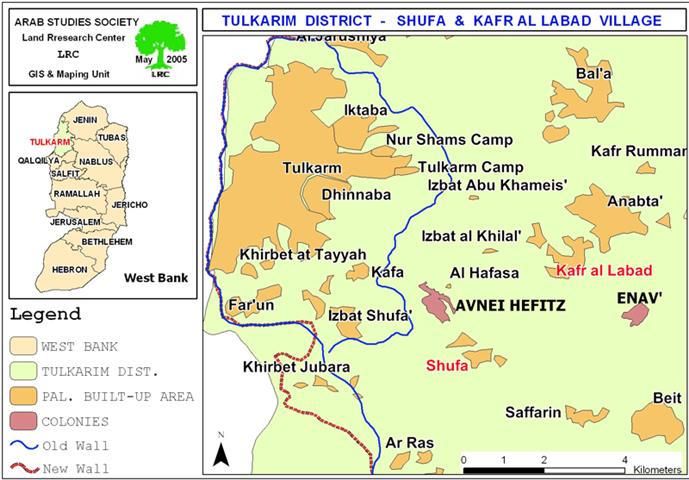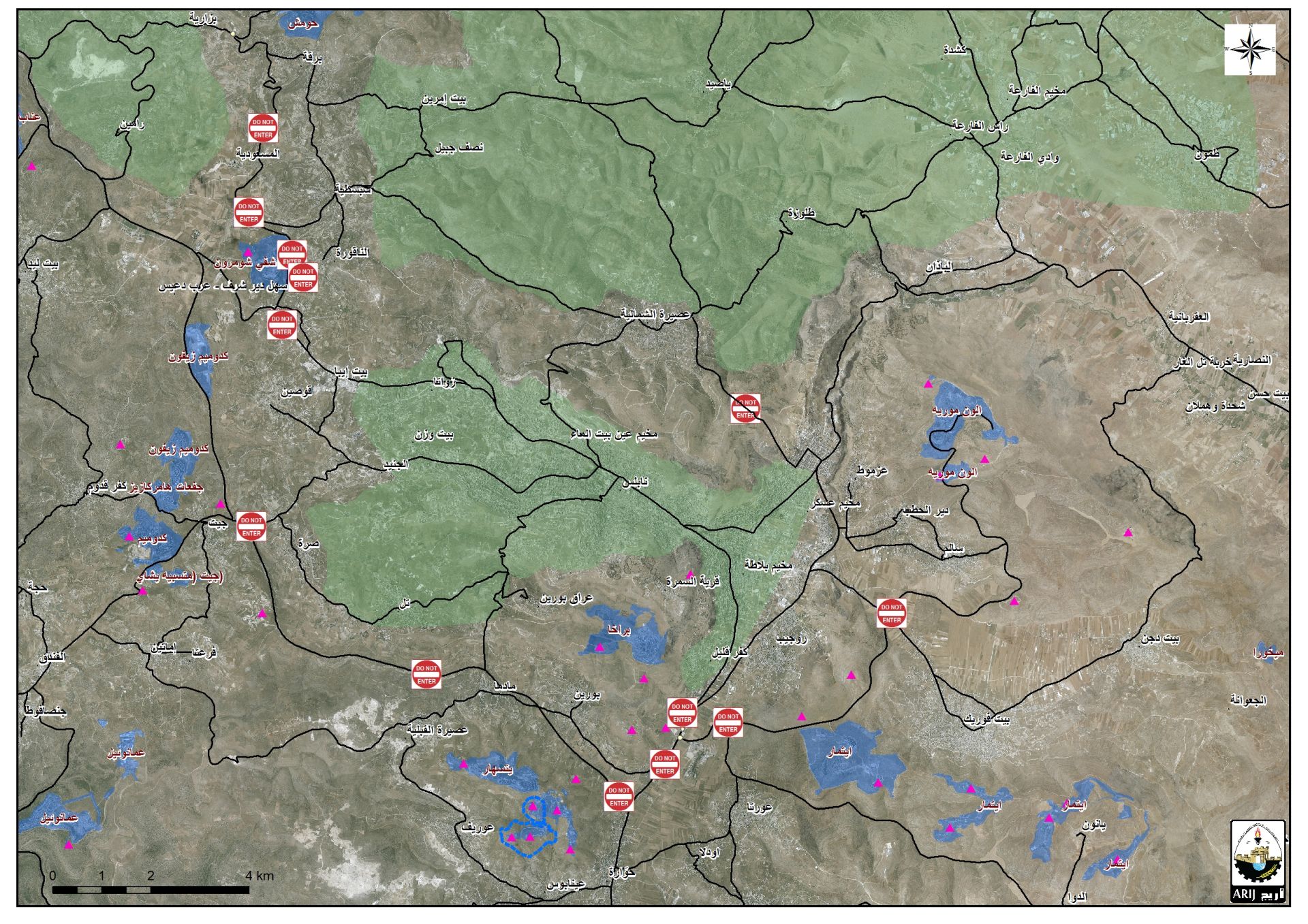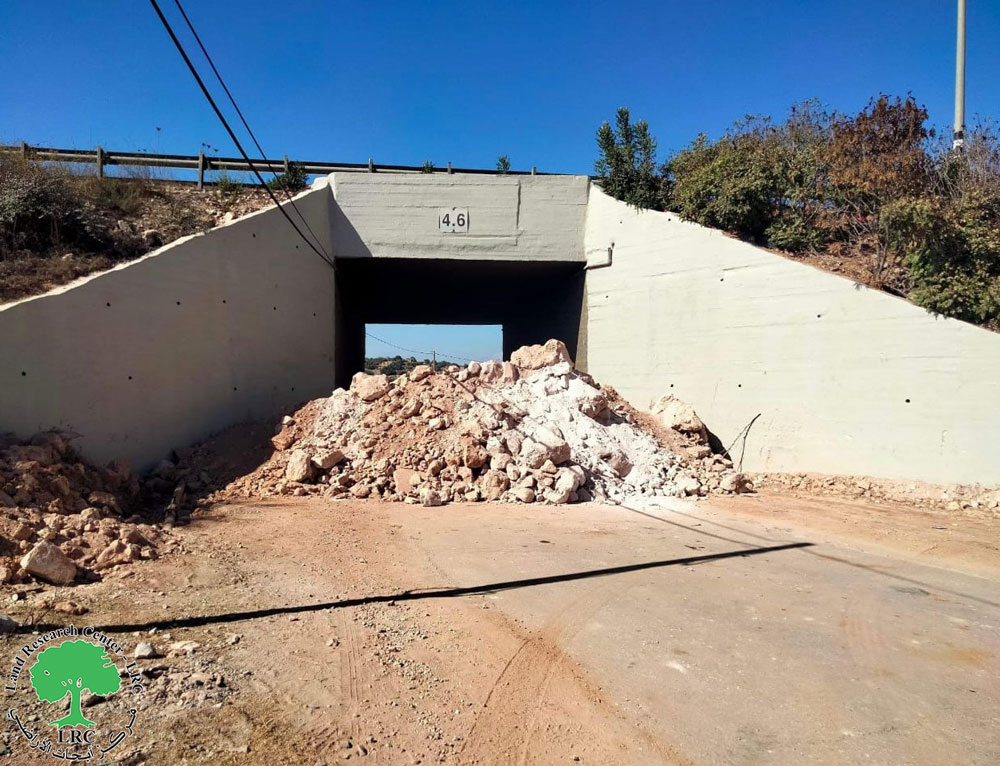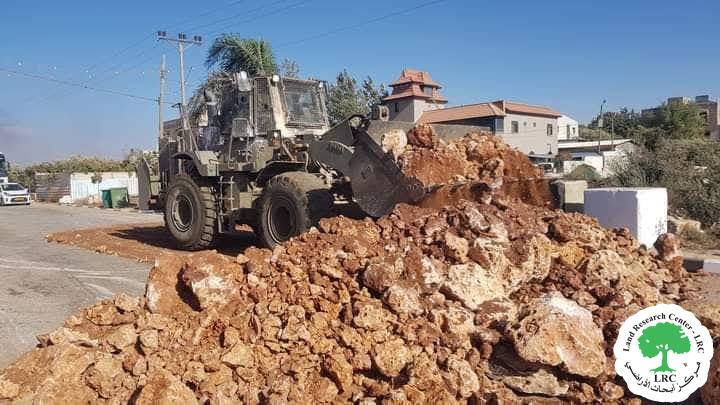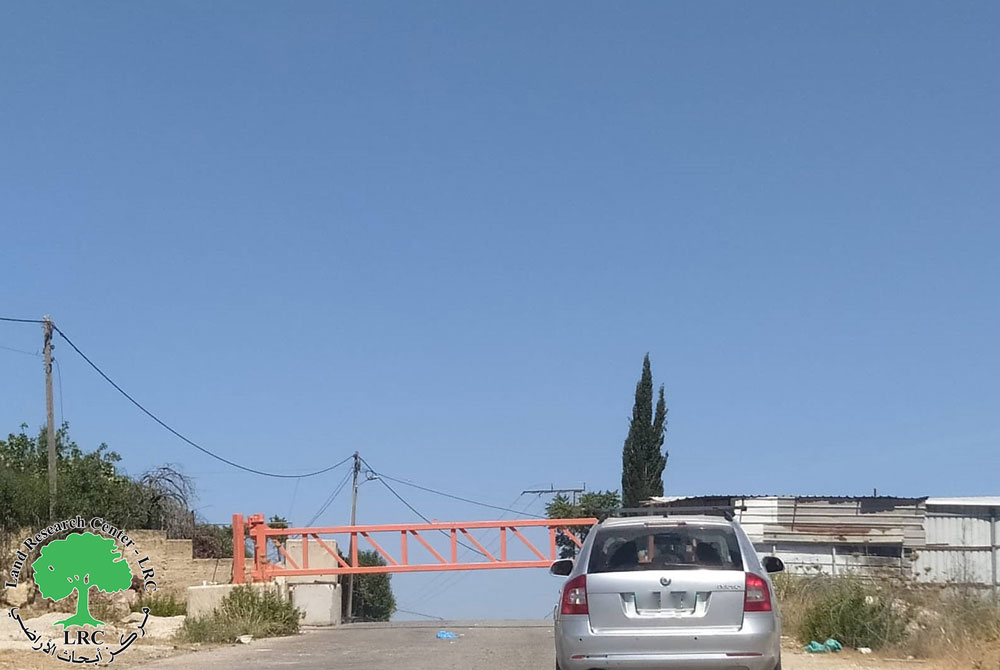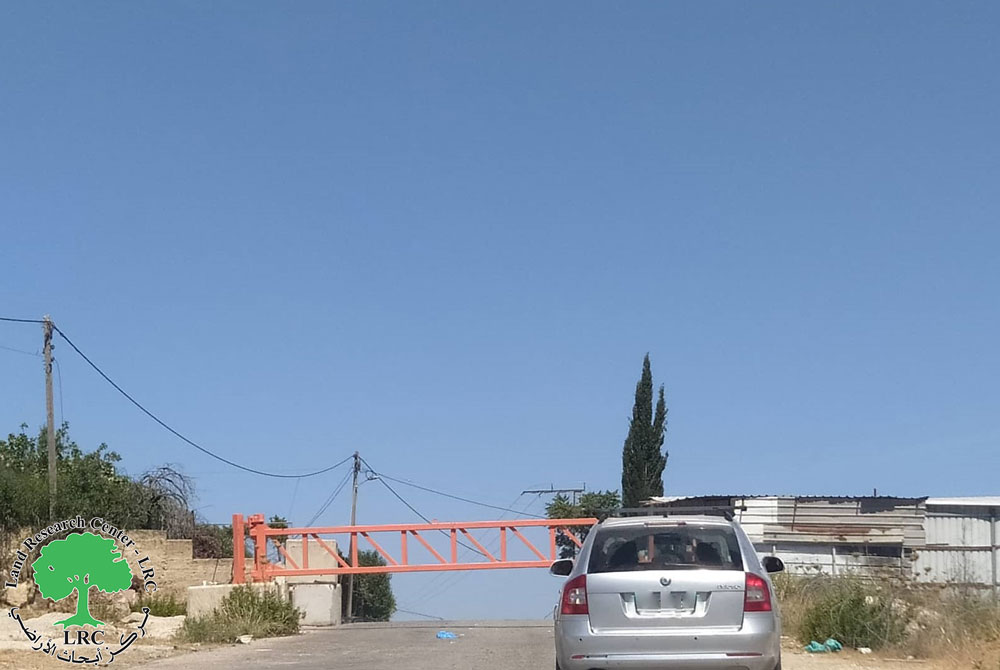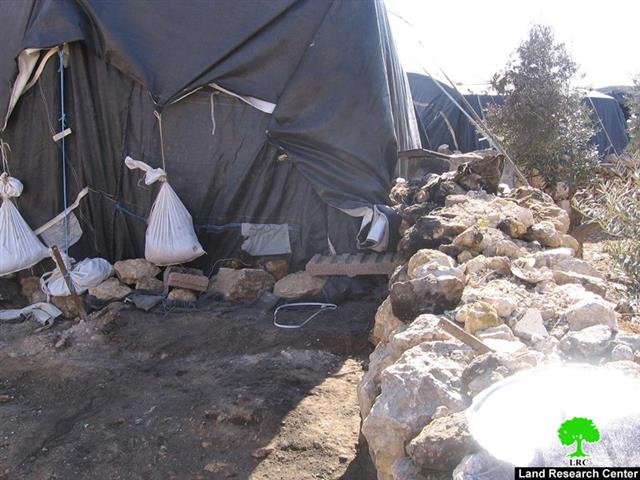Violation: closure of the agricultural road that connects the of Shufa village with Kafr al Labad south of Tulkarm.
Date of violation: January 25, 2011.
The aggressors: the Israeli occupation army.
The affected: the people of the village of Shufa.
Shufa village: the village of Shufa is located to the south-east of Tulkarm city with a built up area of 360 dunums and the total area of the village is nearly 11,700 dunums.
Details of the violation:
Shufa, 8 km, south of Tulkarm is a village weakened by the Israeli siege imposed on it since the beginning of Al-Aqsa Intifada in 2000, and lacks the minimum elements of stability and infrastructure. Now, the life of its citizens is full of oppression, deprivation, and saturated with the worries and grief, especially since the village is stifled by the colonies of Afni hefetz from the west, where daily suffering prevails because of the real direct contact with the settlers, and the colony of Enav from the east which swallows large tracts of agricultural land at the expense of ordinary farmers in the village.
On the morning of Tuesday 25 of January, 2011, the Israeli occupation forces closed with earth mounds the agricultural road that links between the village of Shufa and the village of Kafr al Labad south of Tulkarem which was opened by the Palestinian Agricultural Relief Committees (PARC) in early 2011 at the length of 4 km and cost of 40 thousand US dollars.
For his part, engineer Saleh Alissa of PARC wondered for any security reasons alleged by the occupation in the closure of this road. Speaking to LRC field researcher, he said ‘This road was a glimmer of hope for the farmers and residents of the besieged village of Shufa as it serves tens of acres planted with plastic houses in the region. In addition to that, this road has become the main road being followed by the people of the village towards the nearby towns and cities after the closure of all other outlets at the hands of the occupation authorities under the pretext of protecting the security of neighboring settlements’.
In order to pressure on the citizens and break their steadfastness and intimidate them to prevent them from access to land and within a deliberate plan by the Israeli government, the Israeli soldiers installed more than 30 surveillance cameras on high piles in the vicinity of agricultural land to monitor their movements ‘.
It should be noted that the occupation authorities embarked in 1987 on the looting of the most fertile agricultural lands of the village northern parts for the establishment of Avni Hefetz colony which took the expansion since that date and until this moment at the expense of the rest of the farmers’ land to become wider than the village whose age is estimated at thousands of years.
The greed of the occupation authorities in the village lands did not stop at this point, but has in previous years, opened a bypass road linking the settlement of Avni Hefets with the territories occupied in 1948 along the western, eastern and southern territory leaving the village only a few of its agricultural and urban lands.
It should be noted that at the beginning of Al Aqsa Intifada the occupation authorities proceeded to shut down the village’s main road which links the village with the city of Tulkarm with sand barriers and cement blocks. Also, an Israeli military watchtower was set up at the main entrance to the village. These measures have forced citizens to take detour roads and risky adventures in order to reach their workplaces in Tulkarem. In addition to that, the Israeli army closed the road linking between the two parts of the village -Shufa and Izbat Shufa- with three earth mounds. All these actions have negatively affected agricultural crops and products, as well as livestock because of the inability of owners of livestock access to pastures. The following are the direct social, academic, educational and economic impacts resulting from the closure of the main village road:
1. Patients can not easily receive treatment, especially as the village lacks any medical services and there are a number of patients who died at the checkpoints before they were able to reach the hospital inTulkarm.
2. This procedure negatively affected the academic life and increased the burden on the families of students studying at universities and schools of the city, by doubling the wages of movement of vehicles and the state of anxiety felt by these students created by the ongoing mal practices of the occupation forces and settlers.
3. These procedures also led to massive losses in the agricultural sector, which is a source of livelihood for all people of the village due to the lack of access to agricultural land and marketing of their produce especially fruits, vegetables and olives.
4. The inevitable result of the Israeli siege has become a reverse migration to the city where 15 village families of most intellectuals and businessmen have already left.


